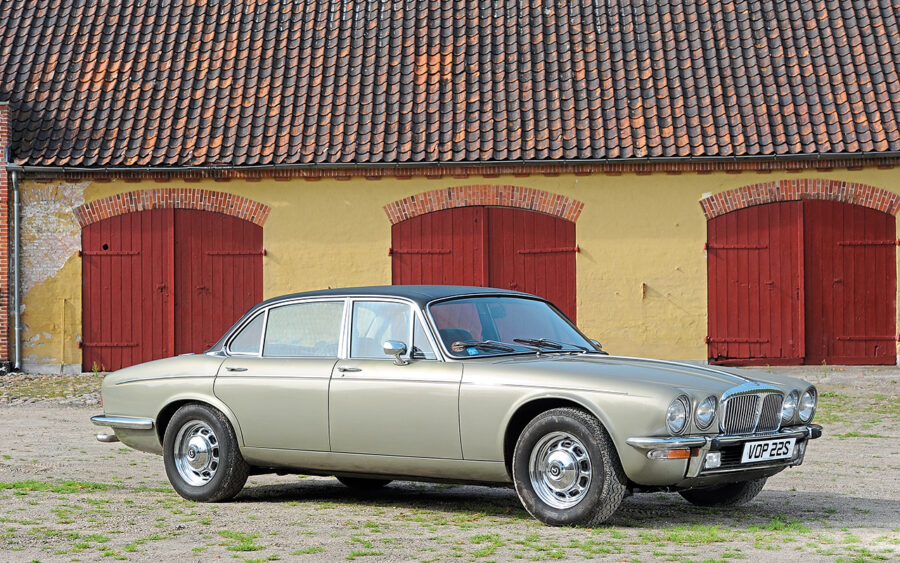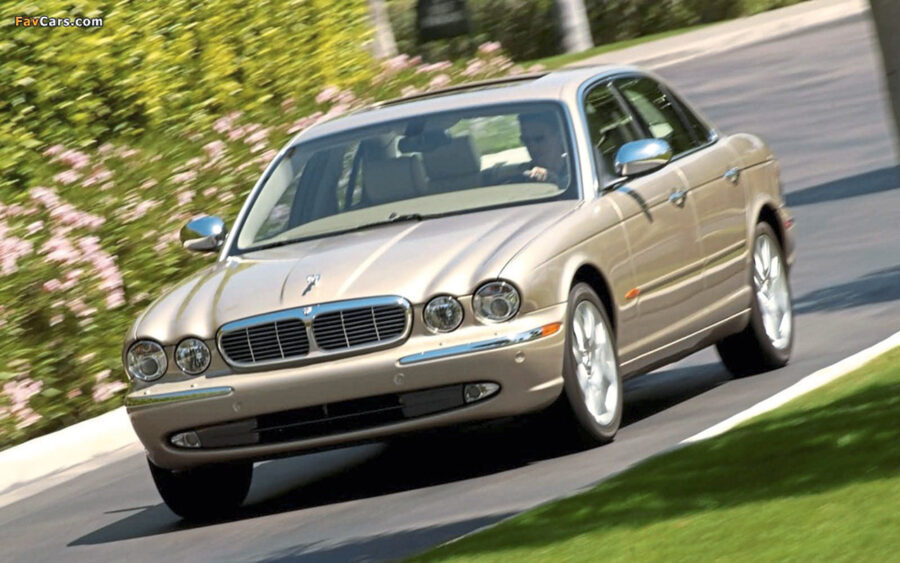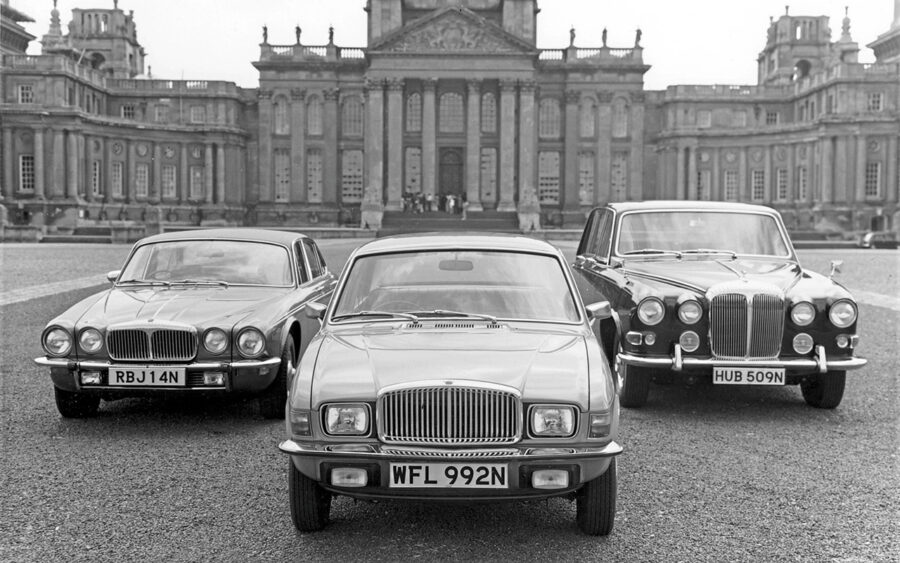We explore the story of how how Vanden Plas, one of Britain’s biggest coachbuilding names, became involved with Jaguar
Words: Sam Skelton
Vanden Plas is one of the most recognisable coachbuilders Britain has ever had. It bodied Blower Bentleys, Alvises, Armstrong Siddeleys, Daimlers and Lagondas. But it was Bentley for which it became most famous, bodying 700 of Bentley’s chassis between 1924 and 1931. Vanden Plas had begun as Carrosserie van den Plas in Brussels, Belgium, in 1870 – and would remain active in Belgium until 1949. Like Daimler, it had an English subsidiary that would later break away – established by Warwick Wright of London in 1913 as a means of building bodies under licence.
During the First World War it built aircraft components, but failed to re-establish itself as a post war coachbuilder. It was placed into receivership in 1922, before being bought by the Fox brothers. They moved production from Hendon to Kingsbury and built on contacts generated before the war. It was this iteration that was responsible for the bodies of most ‘Blower’ Bentleys of the pre-Rolls-Royce era.
During the Second World War, it manufactured the wooden frame for the De Havilland Mosquito, subsequently making parts for the De Havilland Vampire jet. After the war it sought to return to coachbuilding – but had been approached by Austin with a proposition. It wanted a chauffeur-driven version of its imminent large Sheerline saloon – would Vanden Plas be interested in the job?
Vanden Plas would become a wholly owned subsidiary of Austin in 1946, and as a result would be subsumed into BMC in 1952. It was best known for the A120 Princess limousine at this stage – the upmarket variant of the Sheerline, still bearing Austin badging. From 1957 the now wider two-model Princess range would drop the Austin branding to enable its sales in Morris showrooms, and by 1960 Vanden Plas had been established as a marque in its own right. It would continue to build the Princess limousine alongside saloons derived from the Austin Westminster – trimmed to better Daimler and Jaguar models but without the handling prowess.
The formation of BMH in 1966 is what led to the first joint venture between Jaguar and Vanden Plas. With two large limousines in its portfolio – the Vanden Plas Princess and the Majestic Major-based Daimler DR450 – BMH found itself in competition with itself in what was realistically a small market. It was felt that a sole replacement could do the job of both cars. Internal discussion led to the Daimler proposal being chosen – based on an elongated MkX floor and running gear – trimmed by Vanden Plas at Kingsbury and featuring a body which owed a distinct debt to the Hooper Empress bodies fitted to a number of post war Daimler Regency models. That body wasn’t structural, enabling the sale of drive-away chassis for conversion into hearses.

From 1968 the DS420 was Vanden Plas’s primary responsibility – production of the smaller 4 Litre R saloon had ceased, and the Kingsbury plant’s only other product was the small Vanden Plas Princess 1300 based upon the BMC ADO16 model. While the idea was that there would be twice the DS420s as either of its predecessors, that still left capacity at the factory and Jaguar’s one-model policy lacked the breadth of range of the varied models which preceded it. Lofty England had been in discussion with Vanden Plas’s Roland Fox about creating a new halo model for the Jaguar saloon car range, in the manner of the old Farina-based Vanden Plas models. It wouldn’t be long coming.
When the Jaguar XJ12 and Daimler Double-Six were launched in 1971, a market was identified for a longer wheelbase variant with more impressive trim, to fill the gap left by cars like the Daimler Majestic Major and the Jaguar MkX. This would be based on the XJ, not the DS420, but would still be trimmed by Vanden Plas. The Daimler Double-Six Vanden Plas of 1971 was the first long wheelbase XJ, offering an additional four inches of rear legroom in a well-executed shell partially hidden by a standard vinyl roof.
Colours were restricted to a Vanden Plas only palette of seven colours – with three interior colours available on any exterior you chose. Externally you could choose Silver Sand, Caramel, Coral, Aegean Blue, Sage Green, Morello Cherry or Aubergine while inside the choices were Chamois (beige), Tuscan (tan) and Deep Olive.
The Queen Mother ordered a unique example to replace her MkVIIM: she wanted a Vanden Plas but didn’t want the Daimler branding. Her car is therefore the only Jaguar XJ12 Vanden Plas built to UK specification, in her chosen colour scheme of purple with grey leather trim. All Vanden Plas colour schemes were applied to Series 1 and early Series 2 cars at the Vanden Plas works in Kingsbury, which is why the bonnet and boot areas are finished in black on these cars – it avoided the need to strip them down for repainting.

The biggest interior change was to the seats – wider pleating and a flatter design than the standard Jaguar or Daimler seats, with individual seating in the rear. The door cards were also different, with walnut inserts to black cappings, and boxwood inlays which would follow through to the dashboard. Map pockets were fitted to the back of the front seats, and all was leather – unlike the Ambla used for non-wearing faces in the standard models. Vanden Plas models also included standard inertia reel front seat belts, with Daimler monograms on the buckles. Centre consoles were trimmed in leather and carpet rather than Ambla, while the carpets themselves were deep Wilton. Rear swivel jointed interior lights were a standard feature.
For Series 2, little changed for the Vanden Plas model that was not forced upon it by the wider Series 2 revisions. That meant a new nose treatment with a higher bumper, and a revised dashboard layout, but otherwise trims and fittings were as before. The only change was that during the Series 2 lifespan, Aegean Blue was replaced by the lighter Biascan Blue. The carpets were changed for deeper units, and lambswool over-rugs were standardised for the first time. Deeper underfelt was also fitted, along with a longer centre console to accommodate the rear ashtray retained from the Series 1.
In 1974 Vanden Plas was formally assigned to Jaguar by Leyland as a subsidiary brand – of its three product lines, both the Daimler Vanden Plas and the DS420 were Daimler products, and only the Vanden Plas 1500 served as a link with Austin. However, the Ryder Report of 1975 called for extensive rationalisation, and the Kingsbury factory would be a casualty of this cull in 1979. Vanden Plas 1500 production would transfer to MG at Abingdon, while the two Daimler models would revert to Coventry.
The Series 3 would be the final UK market Vanden Plas – and changes here appeared to be less thorough than on the older model. While the Vanden Plas retained the chrome side trim and unique interior at this stage, it lost the vinyl roof as such things had become passe. As with Series 1 and 2 cars seven colours were available – Coral, Caramel and Silver Sand would remain, alongside Biascan Blue from the late Series 2, and new colours Amethyst, Mistletoe and Mink. All were available with Chamois, Olive or Tan interiors, and special-order colours from the standard production line such as Black were also available. A single Jaguar XJ5.3C was sent to Kingsbury to explore the possibility of a Daimler Double Six Vanden Plas Coupe. This car is believed to survive in Germany.
The imminent privatisation of Jaguar meant that Vanden Plas sales in Britain would cease by November 1983. Vanden Plas was not part of the company floated on the stock market – with only Jaguar and Daimler leaving Leyland, which had also used Vanden Plas as a trim designation for Austin and Rover branded cars. Some reshuffling of the Jaguar range meant that the Sovereign name and trim level would switch from Daimler to Jaguar branding, and a new Daimler 4.2 would join the Double Six in assuming Vanden Plas type trim as standard. Meanwhile, rights to the Vanden Plas name were assigned to British Leyland in the UK, and to Jaguar in North America.

While this was the end of Daimler Vanden Plas production and of the association with Jaguar in the UK, it should be noted that it was far from the case in North America. The Daimler name had not been marketed in America since 1967 – BMH had felt that the advertising budget wouldn’t stretch to all brands in its portfolio, and as all planned Daimler models for export would be sisters to equivalent Jaguar models it was felt that Jaguar had a greater chance of success. By 1982, Daimler-Benz had leapt upon the opportunity and trademarked the Daimler name for itself.
The first Jaguar Vanden Plas models were introduced in 1982 – effectively Daimler 4.2 Vanden Plas models fitted with Jaguar grilles and plinths, they offered a range topping model for a market that didn’t have the Daimler brand on offer. When the Vanden Plas trim was subsumed into standard Daimler models in 1983, the American cars continued with Vanden Plas badging.
The Jaguar Vanden Plas of 1986 was based upon the new XJ40 shell – effectively a Daimler 3.6 fitted with Jaguar grille, plinth, and XJ6-style twin headlamps. The 1989 Majestic special edition introduced the fluted plinth and grille, alongside special Regency Red paint, seat pining, carpets and inserts to the polished alloy wheels. This car also bore the rectangular headlamps. For 1990, the rectangular lamps, fluted grille and plinth would become features of the standard Jaguar Vanden Plas model.
The X300 and X308 variants would also use fluted grilles and plinths in deference to their Daimler origins, but there was no equivalent Daimler by the time of the X350-based Jaguar Vanden Plas. These corresponded in specification with our Super V8 model, retaining contrast piping and picnic tables among other options – but were also available in naturally aspirated 4.2 litre form.

There would even be VDP editions of the S-Type and X-Type, the latter corresponding to UK Sovereign specification. While not badged using the traditional Vanden Plas VP acronym or referred to in print as the Vanden Plas, it is clear that Jaguar USA was looking to capitalise on the past glory of the Vanden Plas-trimmed models when these editions were conceived.
Following the end of X350 production, Jaguar USA appears to have retired the Vanden Plas name. No X351 or XF has ever been branded as a Vanden Plas, VP or VDP by the factory.
Over time, differences of opinion have formed as to how correctly to pronounce Vanden Plas – many pronounce it with a silent S and a long A, as if it were French in origin and rhymed with car. This, it is believed, is as a result of an old advertising slogan for the Vanden Plas 1500, “Travel swift and far in your Vanden Plas” – understandably, it reads as if rhyming were the intention.
However, Vanden Plas began as a subsidiary of Flemish Belgian firm Carrosserie van den Plas. In its original Flemish, Plas would have had a short A and hard S, as in mass. Vanden Plas should therefore follow suit.





